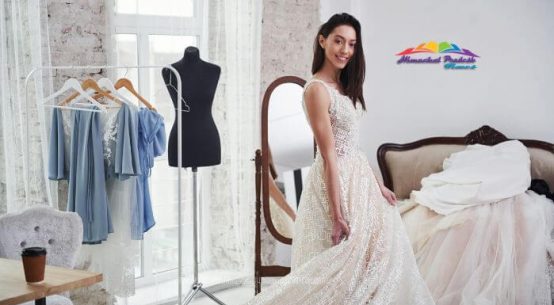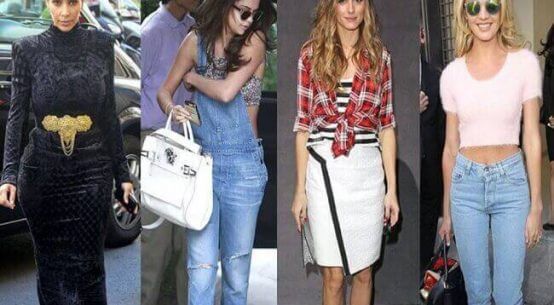The 19th century fashion marks the amount starting Jan one, 1801 and ends day, 1900.
It was an amount of dramatic modification and speedy socio-cultural advancement, wherever society and culture ar perpetually dynamical with advancement of your time.
The Fashion of the 19th century fashion powerfully mirrored the technology, art, politics and culture of the time of that were extremely powerful to the designs and silhouettes.
For women, fashion was AN extravagant and extroverted show of the feminine silhouette with corset pinched waistlines, active full-skirts that flowed in and out of trend and decoratively embellished robes. For men, 3 piece suits were tailored for utility in business furthermore as sporting activity. The fashion during this article includes designs from the 19th century fashion through a Western context – specifically Europe and North America.
.[1800-1829]
The textile trade was the primary to use fashionable production techniques, particularly mechanized cotton spinning with automatic machine looms. With the arrival of machine-controlled strategies, through manufacture came too the creation of factories that maximized productivity and increased economical production. The unprecedented fast and sustained economic process incontestable by the textile trade – through employment and price output saw vast changes within the affordability of garments and materials as costs fell.
-
Art and Culture
The fashion of the time reflects this transformation amount because it step by step moves faraway from the Empire silhouette and classical influences of Enlightenment that take inspiration from ‘classical antiquity’. The shift towards a replacement Romantic vogue affected by ability and imagination is printed by plenty of theatrical and dramatic designs that unit of measurement affected by a combination of the mysterious medieval past with lavish and dramatic Gothic decoration. The extravagance of those displays reaches its peak nearing the tip of Romanticism as ‘exuberance becomes sentimentality’. For each men and ladies, silhouettes were progressively exaggerated with the institution of full-bosomed shapes inform to a lucid rejection of previous classical geometric vogue. Layers of color and pattern side to the dramatic and communicative show that became characteristic of Romanticism and once more contrasted the eighteenth century monochromatic palette.
-
[1830-1869]
By mid-19th century fashion folks were subsidence into the conventional routine of life as formed by the changes and innovations that came with the primary technological revolution. more discoveries in arithmetic, science and engineering saw advancements in medication in addition as immense progress for communication and transportation. The introduction of telegraphy and also the gap of major railways connected folks in major industrial cities to 1 another. Emerging economic process and world-wide economic integration saw new trade routes and brought wealth to the capitalist powers of the Western world. AS standards of living slowly improved and financial gain per capita was on the increase, the upper-middle-class were getting down to pay a lot of on indulgent instead of alone necessary merchandise.
-
Art and Culture
The mid-19th century once more shifts from Romanticism to Realism, typically known as Naturalism. This ideologist movement ‘sought to convey a truthful and objective vision of up to date life’.
Women’s fashion at the start of Queen Victoria’s reign became less significant – limiting corsets were paired with vainglorious skirts to depict the feminine figure as weak and submissive that aligned with early Victorian ideals of the modest domestic girl stereotype. Layered petticoats with crinoline and steel-hoop structures weighed ladies down creating them physically rigid, symbolically representing a restricted participation in society Associate in Nursing an obligatory passivity.
Menswear of the first Victorian Era was unpretentious with the increase of the respectable male bourgeois gentleman. However, shortly once each toilet facility and women’s fashion became a lot of vibrant and relaxed with a lot of exuberant designs and new techniques together with adornment trims because of increasing availableness of the stitching machine. By the latter 1/2 mid-nineteenth century it becomes clear that fashion technologies revolutionized the styles of notably womenswear fashion with cage crinoline sanctionative a bigger however a lot of light-weight hoop skirt. In align with the trend of providing larger comfort, menswear ‘relaxed into wide, easy cuts’.
-
[1870-1900]
The late-19th century recognized additional industry with the Second historic period, additionally called the historic period, which was to blame for illustrious innovations. The modern social and economic infrastructure continuing to revolutionize consumption patterns because the costs of commodity ablated dramatically with the rise in productivity. The growth of urban centers and ‘new technologies, like the introduction of electricity into article of 19th century clothing producing, made a boom within the ready-made market’.
-
Art and Culture
Late nineteenth century movements in art and culture embrace art movement and Post-Impressionism that square measure defined by their rebellion against classical subject material which that embraces depictions of recent life as well as new technology and ideas ‘concentrating on themes of deeper symbolism to precise emotions, instead of merely optical impressions’.
Women’s fashion of the late nineteenth century saw Associate in Nursing introduction of designs with an extended, slim, body-hugging silhouette that exposed the natural figure, as well as the popular ‘princess line’ and later ‘artistic’ vogue dresses. These designs featured seamless waists, efficient skirts and a slow move removed from restrictive corsetry, rather more sensible than the standard apparel. These ‘slender and angular’ designs had excessive decoration that stipendiary for the rebellion against serious, ultra-restrictive trends. 19th century dress gildings enclosed bows, emphatic rushing, thick made materials and trims.
Menswear began to possess a big influence on women’s article of 19th century clothing with masculine designs and craft changing into more and more fashionable, ladies generally wore a shirt collar and tie, significantly once effort. For men, lounge suits were changing into more and more fashionable and were usually quite slim, maintaining Associate in Nursing overall slender silhouette. A business suit was a lot of casual apparel frequently worn by businessmen, with jackets open or partly undone with a vest beneath.



